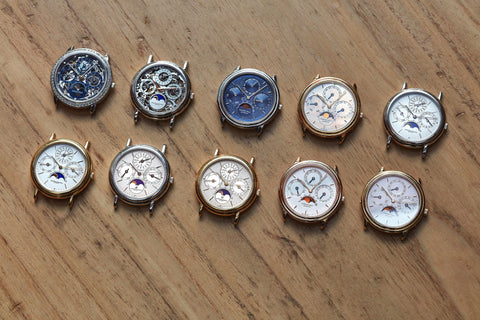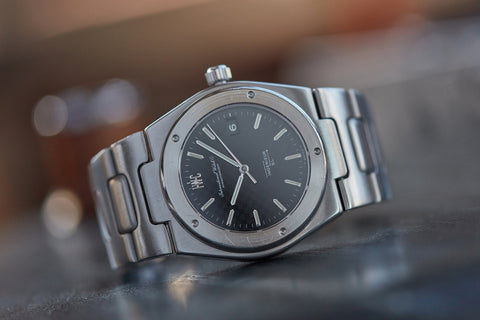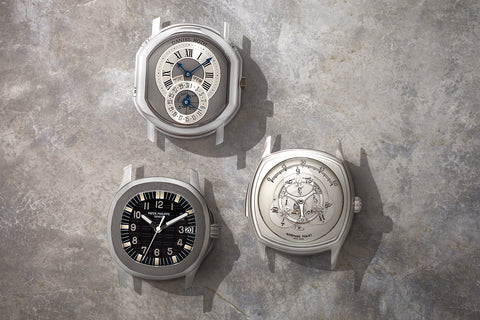First released in 1984, this Vacheron Constantin reference 43032 allows us a glimpse into the inner workings of a perpetual calendar complication. Combining a classic, yellow-gold case and a skeletonised version of the ultra-thin, automatic 1120QP movement, it adds drama and depth to this traditional timepiece.
You May Also Like
Reviving the Perpetual Calendar
The perpetual calendar has always been one of the most classic complications in horology.
For much of the 20th century, perpetual calendars remained scarce, on account of their niche appeal and the specialised skillset needed to design and assemble one. In the wake of the Quartz Crisis, these complicated pieces continued to be exceedingly rare, as their very purpose came under threat. Indeed, this seismic event had decimated the watchmaking industry, with the number of watchmakers in Switzerland having dropped from 1,600 to 600.
However, against all odds, the perpetual calendar experienced a revival towards the end of the 20th century. Within the span of seven years, between 1978 and 1985, Audemars Piguet, Vacheron Constantin and Patek Philippe all introduced their own ultra-thin, automatic perpetual calendars. These were amongst the first perpetual calendars to be produced in a series. This marked a fundamental departure with the past, when each of the manufactures from the “Holy Trinity” of watchmaking would only have produced a few dozen of these pieces a year, at the very most. This signified a renewed faith in the future of complicated horology.
Whilst Audemars Piguet were the first out of the gate in 1978, this was followed by Vacheron Constantin unveiling their automatic, ultra-thin perpetual calendar wristwatch in 1983. Rather frustratingly for Patek Philippe, this was two years before they came out with their own reference 3940. As a starting point, Vacheron Constantin used the mythical Jaeger-LeCoultre 920, which was the thinnest automatic movement in the world when it came out in 1967. They then reworked a perpetual calendar module from Dubois-Depraz, a famed module manufacturer, who has supplied all members of the “Holy Trinity”, amongst others. The end result was the Caliber 1120 QP, which still remains in production to this day, albeit in an updated form.






























































































































































































































